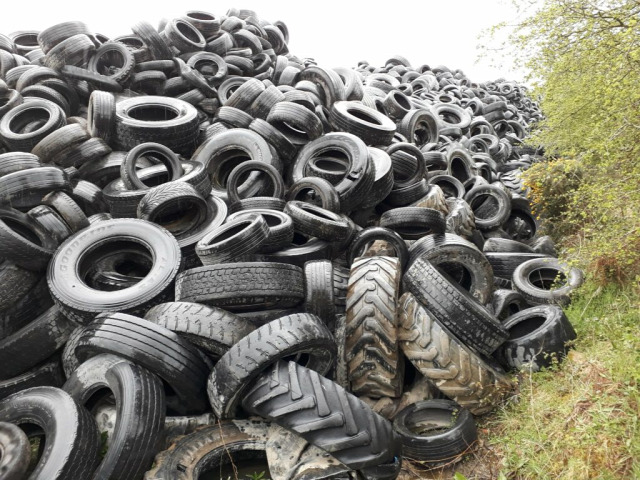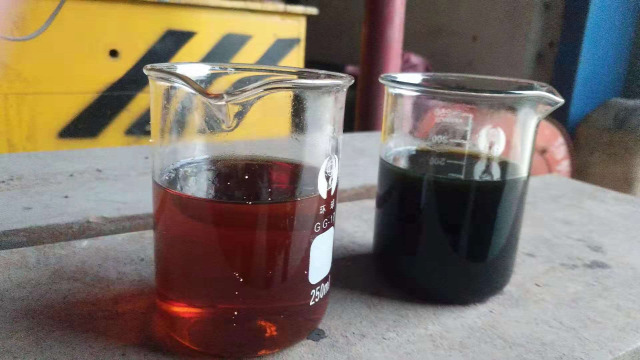In the pursuit of sustainable waste management and energy production, pyrolysis has emerged as a transformative technology. This thermochemical process converts organic materials into valuable resources such as bio-oil, biochar, and syngas. However, when it comes to implementing pyrolysis on a practical scale, one must navigate the decision between two fundamental approaches: batch and continuous processes. Each method has its advantages, disadvantages, and specific applications. In this exploration, we delve into the intricacies of batch and fully continuous pyrolysis plant, helping you make an informed decision based on your unique needs and goals.

1. Understanding the Basics: Batch Pyrolysis
In a batch pyrolysis system, the process occurs in discrete, well-defined stages. Here's a breakdown of the key features of batch pyrolysis:
Loading and Unloading: The feedstock, which can include various organic materials such as biomass or plastic waste, is loaded into a batch reactor. Once the pyrolysis reaction is complete, the system is emptied before a new batch is processed.
Controlled Environment: Batch systems allow for precise control over the pyrolysis conditions, including temperature, pressure, and residence time. This control is achieved by adjusting parameters for each individual batch.
Versatility: Batch pyrolysis is highly versatile, accommodating different types of feedstocks and allowing for flexibility in processing various materials. This adaptability is advantageous when dealing with diverse waste streams.
Labor-Intensive: One of the drawbacks of batch pyrolysis is that it can be labor-intensive. Each batch requires manual loading, monitoring, and unloading, which can limit the scalability of the process.
Suitable for Small-Scale Operations: Batch pyrolysis systems are well-suited for small-scale operations or research settings where precise control over process parameters and adaptability to different feedstocks are essential.
2. Delving into Continuous Pyrolysis
Continuous pyrolysis, on the other hand, involves an ongoing and uninterrupted process. Here are the key characteristics of continuous pyrolysis:
Constant Feedstock Input: In continuous pyrolysis systems, feedstock is continuously fed into the reactor, and the process runs without interruption. This continuous feed allows for a more steady and sustained production of pyrolysis products.
Automated Processes: Continuous pyrolysis systems are often more automated than their batch counterparts. The continuous nature of the process allows for better integration with automated control systems, reducing the need for constant manual intervention.
Higher Throughput: Continuous systems generally have higher throughput compared to batch systems. This makes continuous pyrolysis more suitable for large-scale industrial applications where a consistent output is crucial.
Energy Efficiency: Continuous pyrolysis can be more energy-efficient due to the continuous nature of the process, allowing for better heat integration and energy recovery.
Challenges with Feedstock Variation: While continuous pyrolysis excels in handling large volumes of a consistent feedstock, it may face challenges when dealing with varied or inconsistent materials. Batch systems, with their adaptability, can be better suited for diverse feedstock streams.

3. Key Considerations in Choosing Between Batch and Continuous Pyrolysis
When deciding between batch and continuous pyrolysis, several factors come into play. Here are key considerations to guide your decision-making process:
Scale of Operation: Consider the scale at which you intend to operate. Batch systems are often more suitable for smaller-scale operations, pilot projects, or research settings, while continuous systems are designed for larger industrial applications.
Feedstock Variability: Evaluate the consistency of your feedstock. If you are dealing with a consistent and uniform feedstock, continuous pyrolysis might be more efficient. However, if your feedstock varies in composition, batch pyrolysis offers greater flexibility.
Labor Requirements: Assess the level of automation and labor requirements. Continuous pyrolysis systems, being more automated, require less manual intervention, making them suitable for operations with limited manpower. Batch systems, while offering control, may demand more hands-on involvement.
Energy Efficiency Goals: Consider your energy efficiency goals. Continuous pyrolysis systems, with their continuous processes and better heat integration, can offer higher energy efficiency, making them attractive for energy-intensive applications.
Capital Investment: Evaluate the capital investment required for each system. Batch systems, being simpler and often smaller in scale, may have a lower upfront cost. Continuous systems, designed for larger capacities, may involve a higher initial investment.
Product Output and Consistency: Assess the desired output and product consistency. Continuous pyrolysis systems provide a steady and consistent output, making them ideal for industries with specific product quality requirements. Batch systems, while versatile, may have variations between batches.
4. Application Areas for Batch and Continuous Pyrolysis
Understanding the specific application areas where batch and continuous pyrolysis shine can help align your choice with your intended goals:
Batch Pyrolysis Applications:
Research and Development: Batch pyrolysis systems are commonly used in research and development settings where precise control and adaptability to different feedstocks are essential.
Small-Scale Production: Batch systems are suitable for small-scale production, such as in community-based initiatives or pilot projects.
Varied Feedstocks: When dealing with varied feedstocks, such as mixed plastic waste, batch pyrolysis allows for flexibility in processing different materials.
Continuous Pyrolysis Applications:
Large-Scale Industrial Operations: Continuous pyrolysis systems are designed for large-scale industrial operations, offering higher throughput and efficiency.
Consistent Feedstocks: Industries with consistent feedstocks, such as tire recycling facilities or dedicated biomass processing plants, benefit from the continuous and steady nature of these systems.
Energy-Intensive Processes: Continuous pyrolysis is well-suited for applications where energy efficiency is crucial, such as in the production of biofuels or high-value chemicals.
5. Advances in Pyrolysis Technology: Hybrid Approaches
In recent years, researchers and engineers have explored hybrid approaches that combine the advantages of both batch and continuous pyrolysis. These hybrid systems aim to optimize efficiency, scalability, and flexibility, offering a middle ground between the two traditional methods.
Semi-Continuous Systems: Semi-continuous systems incorporate some elements of continuous operation while retaining certain characteristics of batch systems. This approach seeks to strike a balance between steady production and adaptability.
Batch Reactors in Series: Some systems use a series of batch reactors operated sequentially, creating a continuous-like flow with the benefits of batch processing. This design allows for better control over individual batches while achieving a more continuous output.
6. Environmental Impacts: Sustainability in Pyrolysis
Considering the environmental impacts of pyrolysis processes is crucial in the context of sustainable waste management. Both batch and continuous pyrolysis offer environmentally friendly alternatives to traditional waste disposal methods, but their specific impacts can vary.
Emissions Reduction: Pyrolysis, in general, contributes to reducing emissions compared to traditional combustion methods. The absence of oxygen during the process minimizes the formation of harmful byproducts such as dioxins and furans.
Biochar for Carbon Sequestration: The biochar produced as a byproduct of pyrolysis, whether batch or continuous, can be utilized for carbon sequestration in soils. This contributes to mitigating climate change by locking carbon in a stable form.
Waste Diversion: By converting organic waste into valuable resources, both batch and continuous pyrolysis help divert materials from landfills and reduce the environmental impact of waste disposal.
7. Regulatory Landscape and Standards
The regulatory landscape and adherence to standards play a significant role in the implementation of pyrolysis technologies. Governments and environmental agencies may have specific regulations and standards governing waste-to-energy processes, including pyrolysis. Understanding and complying with these regulations is essential for ensuring the legal and environmental sustainability of pyrolysis operations.
8. Conclusion: Customizing Pyrolysis for Your Objectives
In the choice between batch and continuous pyrolysis, there is no one-size-fits-all solution. The decision should align with your specific objectives, the nature of your feedstock, and the scale of your operation. Batch pyrolysis offers adaptability, control, and versatility, making it suitable for research, small-scale initiatives, and varied feedstocks. On the other hand, continuous pyrolysis excels in large-scale industrial applications, providing higher throughput, efficiency, and steady production.
As technology evolves, hybrid approaches combining the strengths of both batch and continuous pyrolysis are emerging, offering innovative solutions that cater to diverse needs. Whether you are aiming for a sustainable waste management solution, energy production, or the development of high-value products, understanding the nuances of batch and continuous pyrolysis is crucial.
In the journey towards a circular economy and a more sustainable future, pyrolysis stands as a valuable tool. Whether you opt for the precision of batch processing, the efficiency of continuous systems, or a hybrid approach, the ultimate goal remains the same – harnessing the transformative power of pyrolysis to convert waste into resources and contribute to a cleaner, greener planet.

